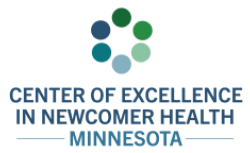Background
OB-GYN Care for Afghans: A Toolkit for Clinicians

On this page:
Context
Demographics
Tools and references
- On August 30, 2021, the final contingent of U.S. troops rapidly departed Afghanistan. The Taliban quickly overtook the country, leading to chaotic evacuations of thousands of Afghan families.1
- People from Afghanistan are referred to as Afghans.2
- Islam is the official religion of Afghanistan, with 99% of Afghans identifying as Muslim.3
- Dari and Pashto are the official languages.3
- As of 2018, 52% of adult men and 23% of adult women were considered literate.4
Context
Afghanistan is an ethnically diverse, culturally rich country with a history of external interference, ongoing tribal conflicts, and war.3 The number of Afghans immigrating to the United States (U.S.) has increased over the last several decades.5 On August 30, 2021, the U.S. rapidly withdrew its last military forces from Afghanistan. The Taliban overtook the country quickly, leading to chaotic evacuations of thousands of Afghan families and the displacement of millions of Afghans.1
Map of Afghanistan and surrounding countries

Source: Frank Raymond Allchin & Petrov, V. P. (2019). Encyclopedia Britannica: Afghanistan | History, Map, Flag, Capital, Population, & Languages.
Demographics
Population
People from Afghanistan are referred to as Afghans;2 As of 2023, Afghanistan had a population of more than 40 million people.6 In 2019, the United Nations Children’s Fund (UNICEF) reported that three-quarters of the population lived in rural areas.7
Religion
Islam is the official religion, with 99% of Afghans identifying as Muslim.3
Language and literacy
Over 30 languages are spoken in Afghanistan, and many Afghans are multilingual. Dari and Pashto are the official languages.8 Due to ongoing war and conflict, Afghanistan’s educational system remains in disarray, with a large gender gap in educational access and attainment for girls and women.9 The 2018 Afghanistan Health Survey reported that nearly 70% of women and nearly 50% of men had never attended school. A history of any school attendance was higher in urban areas (60%) compared to rural areas (36%), regardless of gender.10 In 2021, 52% of adult men and 23% of adult women were considered literate.4
Tools and references
History, cultural beliefs, health concerns and priorities, health care and access, and more to consider when caring for or assisting Afghan refugees and humanitarian parolees.
- Switchboard: Cultural and Practical Considerations for Working with Afghan Clients, Afghan History - Module 1
- Switchboard: Cultural Backgrounder: Afghan
- Switchboard: Who are the Afghan Newcomers Part I: Key Events in Recent Afghan History
- Switchboard: Who Are The Afghan Newcomers Part II: Social And Cultural Characteristics
- Switchboard: Who Are The Afghan Newcomers Part III: Transitioning To A U.S. Culture
- Switchboard: Who are the Afghan Newcomers? Understanding the Background and Socio-Cultural Strengths and Needs of Afghan Evacuees to the U.S.
- News Desk. (2021, August 30). A Historical Timeline of Afghanistan. PBS NewsHour; PBS. https://www.pbs.org/newshour/politics/asia-jan-june11-timeline-afghanistan
- Definition of AFGHAN. (n.d.). Www.merriam-Webster.com. https://www.merriam-webster.com/dictionary/Afghan
- Frank Raymond Allchin & Petrov, V. P. (2019). Afghanistan | History, Map, Flag, Capital, Population, & Languages. In Encyclopedia Britannica. https://www.britannica.com/place/Afghanistan
- Literacy rate, adult total (% of people ages 15 and above) - Afghanistan | Data. (n.d.). Data.worldbank.org. https://data.worldbank.org/indicator/SE.ADT.LITR.ZS?locations=AF
- Julian Montalvo & Jeanne Batalova. (2024). Afghan Immigrants in the United States. Migration Information Source; Migration Policy Institute. https://www.migrationpolicy.org/article/afghan-immigrants-united-states-2022
- World Population Dashboard -Afghanistan. (n.d.). United Nations Population Fund. https://www.unfpa.org/data/world-population/AF
- Afghanistan Education Equity Profile for Adolescent Girls. (n.d.). https://www.unicef.org/rosa/media/5491/file/Afghanistan
- SCA. (n.d.). Languages in Afghanistan – SCA. https://swedishcommittee.org/afghanistan/language/
- UNICEF. (2016). Education. Unicef.org; UNICEF. https://www.unicef.org/afghanistan/education
- Afghanistan Health Survey 2018. (2019). KIT Royal Tropical Institute. https://www.kit.nl/wp-content/uploads/2019/07/AHS-2018-report-FINAL-15-4-2019.pdf